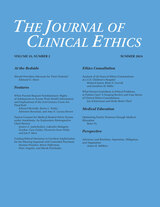
We've eaten Alar with our apples and PCBs with our fish, drunk arsenic with our water, breathed asbestos in our schools. Someone sounded the alarm, someone else said we were safe, and both had science on their side. Whom are we to trust? How are we to know? Amid this chaos of questions and conflicting information, Aaron Wildavsky arrives with just what the beleaguered citizen needs: a clear, fair, and factual look at how the rival claims of environmentalists and industrialists work, what they mean, and where to start sorting them out.
Working with his students at a risk analysis center, Wildavsky examined all the evidence behind the charges and countercharges in several controversial cases involving environmental health and public safety. Here he lays out these cases in terms an average citizen can understand, weighs the merits of the claims of various parties, and offers reasoned judgments on the government's response. From Love Canal to Times Beach, from DDT to Agent Orange, acid rain, and global warming, from saccharin to asbestos, nuclear waste, and radon, Wildavsky shows how we can achieve an informed understanding of the contentious environmental issues that confront us daily. The book supports the conclusion Wildavsky reached himself, both as a citizen committed to the welfare of the earth and its inhabitants, and as a social scientist concerned with how public policy is made: though it is bad to be harmed, it is worse to be harmed in the name of health.
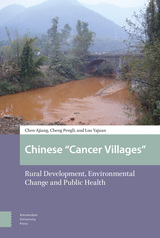
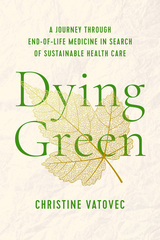
In Dying Green, award-winning educator Christine Vatovec offers an engaging study that asks us to consider the broader environmental sustainability of health care. Through a comparative analysis of the care provided to terminally ill patients in a conventional cancer ward, a palliative care unit, and an acute-care hospice facility, she shows how decisions made at a patient’s bedside govern the environmental footprint of the healthcare industry. Likewise, Dying Green offers insights on the many opportunities that exist for reducing the ecological impacts of medical practices in general, while also enhancing care for the dying in particular. By envisioning a more sustainable approach to care, this book offers a way forward that is better for both patients and the planet.
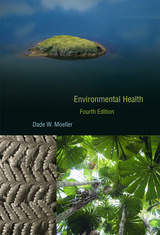
Dramatic changes in the field of environmental health since the Third Edition was published in 2004 demand a new, radically updated version of this essential textbook.
Based on the recommendations of advisory bodies and federal agency regulations, as well as a thorough review of the scientific literature, Moeller’s Fourth Edition is the only fully current text in this burgeoning field. It features new tables and figures, and revisions of those retained from previous editions. Environmental Health is also enriched with the knowledge and insights of professionals who are deeply involved in “real world” aspects of each subject covered.
In eighteen chapters, students receive a complete but manageable introduction to the complex nature of the environment, how humans interact with it, and the mutual impact between people and the environments where they work or live. This new edition emphasizes the challenges students will face in the field: the local and global implications of environmental health initiatives, their short- and long-range effects, their importance to both developing and developed nations, and the roles individuals can play in helping to resolve these problems.
Whether discussing toxicology, injury prevention, risk assessment, and ionizing and non-ionizing radiation, or more traditional subjects like the management and control of air, water, and food, Dade Moeller emphasizes the need for a systems approach to analyzing new projects prior to their construction and operation.
Environmental Health is indispensable reading for practitioners, students, and anyone considering a career in public health.

When the first edition of Environmental Health appeared in 1992 it was quickly recognized as the single best resource for students, public health professionals, and general readers concerned with the well-being of the environment and its inhabitants. Now, four completely new chapters and an additional two hundred pages of text bring this definitive work up to date.
This new edition maintains the earlier edition's balanced coverage of a broad spectrum of timely topics, including air, water, and food; occupational health; insect and rodent control; the effects, uses, and management of ionizing and nonionizing radiation; accidents as a cause of injuries and deaths; natural and man-made disasters; the impact of energy usage; and environmental standards and monitoring. The new edition also offers completely new chapters on four crucial subjects: environmental toxicology, environmental epidemiology, environmental law, and risk assessment. In addition, drinking water and liquid wastes, formerly discussed in combination, are now covered in separate chapters.
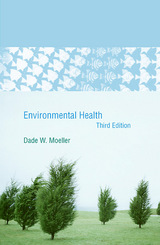
Environmental Health has established itself as the most succinct and comprehensive textbook on the subject. This extensively revised and rewritten third edition continues this tradition by incorporating new developments and by adding timely coverage of topics such as environmental economics and terrorism.
As in previous volumes, the new edition presents balanced assessments of environmental problems, examining their local and global implications, their short- and long-range impacts, and their importance in both developed and less developed countries of the world. The Third Edition also addresses emerging issues such as environmental justice, deforestation, the protection of endangered species, multiple chemical sensitivity, and the application of the threshold concept in evaluating the effects of toxic and radioactive materials.
Whether discussing acid rain, ozone depletion, global warming, or more traditional subjects such as the management and control of air, water, and food, Dade Moeller emphasizes the need for a systems approach. As with previous volumes, Environmental Health, Third Edition, offers a depth of understanding that is without peer. While it covers technical details, it is also a book that anyone with an interest in the environment can pick up and browse at random.
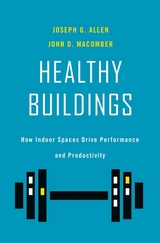
A New York Times Favorite Book of the Year for Healthy Living
A Fortune Best Book of the Year
An AIA New York Book of the Year
“This book should be essential reading for all who commission, design, manage, and use buildings—indeed anyone who is interested in a healthy environment.”
—Norman Foster
As schools and businesses around the world consider when and how to reopen their doors to fight COVID-19, the Director of Harvard’s Healthy Buildings Program and Harvard Business School’s leading expert on urban resilience reveal what you can do to harness the power of your offices, homes, and schools to protect your health—and boost every aspect of your performance and well-being.
Ever feel tired during a meeting? That’s because most conference rooms are not bringing in enough fresh air. When that door opens, it literally breathes life back into the room. But there is a lot more acting on your body that you can’t feel or see. From our offices and homes to schools, hospitals, and restaurants, the indoor spaces where we work, learn, play, eat, and heal have an outsized impact on our performance and well-being. They affect our creativity, focus, and problem-solving ability and can make us sick—jeopardizing our future and dragging down profits in the process.
Charismatic pioneers of the healthy building movement who have paired up to combine the cutting-edge science of Harvard’s School of Public Health with the financial know-how of the Harvard Business School, Joseph Allen and John Macomber make a compelling case in this urgently needed book for why every business and home owner should make certain relatively low-cost investments a top priority. Grounded in exposure and risk science and relevant to anyone newly concerned about how their surroundings impact their health, Healthy Buildings can help you evaluate the impact of small, easily controllable environmental fluctuations on your immediate well-being and long-term reproductive and lung health. It shows how our indoor environment can have a dramatic impact on a whole host of higher order cognitive functions—including things like concentration, strategic thinking, troubleshooting, and decision-making. Study after study has found that your performance will dramatically improve if you are working in optimal conditions (with high rates of ventilation, few damaging persistent chemicals, and optimal humidity, lighting and noise control). So what would it take to turn that knowledge into action?
Cutting through the jargon to explain complex processes in simple and compelling language, Allen and Macomber show how buildings can both expose you to and protect you from disease. They reveal the 9 Foundations of a Healthy Building, share insider tips, and show how tracking what they call “health performance indicators” with smart technology can boost a company’s performance and create economic value. With decades of practice in protecting worker health, they offer a clear way forward right now, and show us what comes next in a post-COVID world. While the “green” building movement introduced important new efficiencies, it’s time to look beyond the four walls—placing the decisions we make around buildings into the larger conversation around development and health, and prioritizing the most important and vulnerable asset of any building: its people.
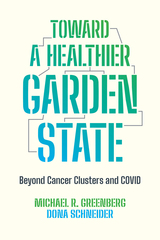
This book uses the past fifty years of New Jersey history as a case study to illustrate just how much public policy decisions and other upstream factors can affect the health of a state’s citizens. It reveals how economic and racial disparities in health care were exacerbated by bad policies regarding everything from zoning to education to environmental regulation. The study further chronicles how New Jersey struggled to deal with public health crises like the AIDS epidemic and the crack epidemic. Yet it also explores how the state has developed some of the nation’s most innovative responses to public health challenges, and then provides policy suggestions for how we might build an even healthier New Jersey.
READERS
Browse our collection.
PUBLISHERS
See BiblioVault's publisher services.
STUDENT SERVICES
Files for college accessibility offices.
UChicago Accessibility Resources
home | accessibility | search | about | contact us
BiblioVault ® 2001 - 2024
The University of Chicago Press




